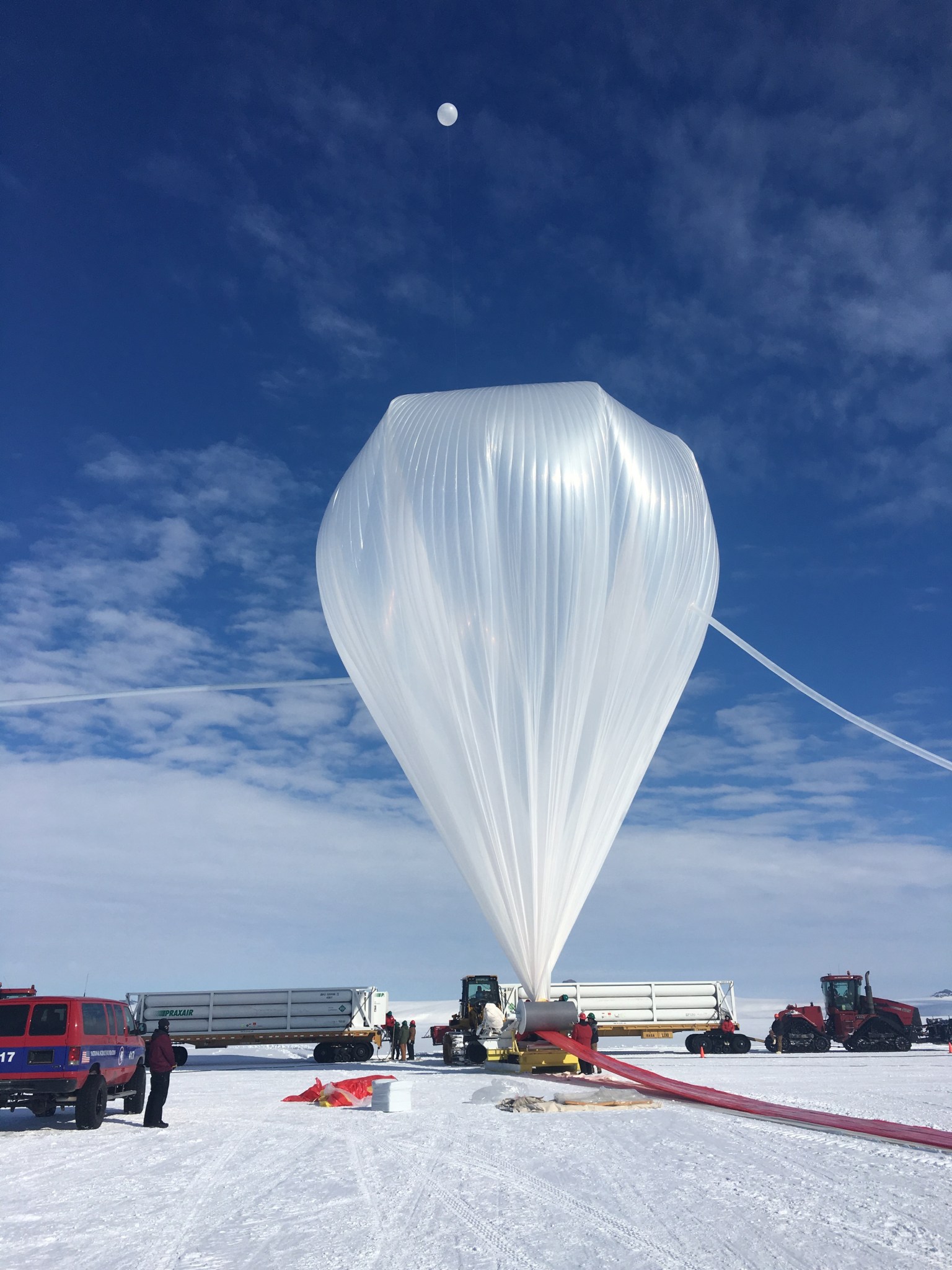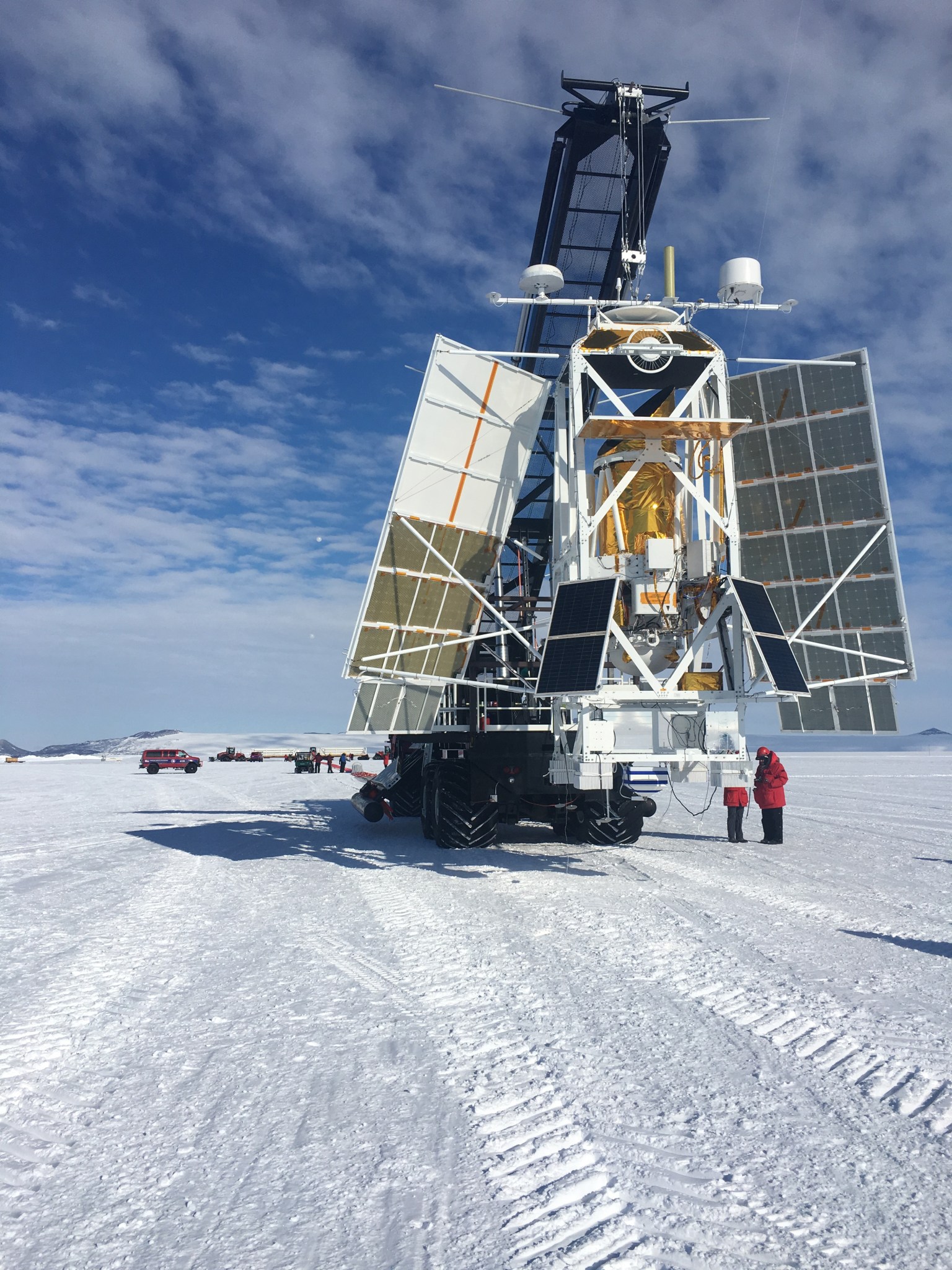The third and final NASA scientific balloon flight from Antarctica’s Ross Ice Shelf near McMurdo Station was successfully launched at 3:53 p.m. EST Dec. 8.
The balloon is carrying the Stratospheric Terahertz Observatory (STO-II) from the University of Arizona. The instrument is designed to better understand the life cycle of the interstellar medium, which is the matter that fills the space between stars in the galaxy. Studying the interstellar medium will help us understand more about the life cycle of stars.
“This has been the earliest in an Antarctica campaign that all the planned missions were successfully launched,” said Gabe Garde, NASA project manager. “The science and balloon teams and personnel with the National Science Foundation’s United States Antarctic Program, all came together for the launches to be conducted early in the launch window.”
“In addition, the weather has been extremely cooperative providing opportunities with low, stable winds that are needed to launch the balloons,” Garde said.
The payloads and instruments are solar-powered, making this time of year an ideal time for balloon flights since the region experiences sunlight 24-hours a day during the Antarctic summer. In addition, a weather phenomenon during the Antarctic summer known as the stratospheric anticyclone takes the balloon on a circular flight trajectory around the South Pole, keeping the balloon over the Antarctic land mass over extended periods of time. Keeping the balloon over land helps enable recovery of the payload at the conclusion of the mission.
The University of Maryland’s Boron And Carbon Cosmic rays in the Upper Stratosphere (BACCUS) payload, launched Nov. 28, has completed one circumnavigation and is currently on a second leg around the Pole.
The Antarctic Impulsive Transient Antenna (ANITA) from the University of Hawaii at Manoa, launched on Dec. 2, is now more than half way around the Antarctic continent.
BACCUS and ANITA continue to be healthy and are performing well.
NASA’s Wallops Flight Facility in Virginia manages the agency’s scientific balloon flight program with 10 to 15 flights each year from launch sites worldwide. Orbital ATK, which operates NASA’s Columbia Scientific Balloon Facility, provides mission planning, engineering services and field operations for NASA’s scientific balloon program. The CSBF team has launched more than 1,700 scientific balloons in the over 35 years of operation.
The National Science Foundation manages the U.S. Antarctic Program and provides logistic support for all U.S. scientific operations in Antarctica.
Anyone may track the progress of NASA’s Antarctica scientific balloon flights via online tools that provide altitude and speed as well as a map showing the balloon’s real-time location, at: https://www.csbf.nasa.gov/antarctica/ice.htm.
For more information on the balloon program, see: https://www.nasa.gov/scientificballoons.
Keith Koehler
NASA’s Wallops Flight Facility, Virginia
keith.a.koehler@nasa.gov































